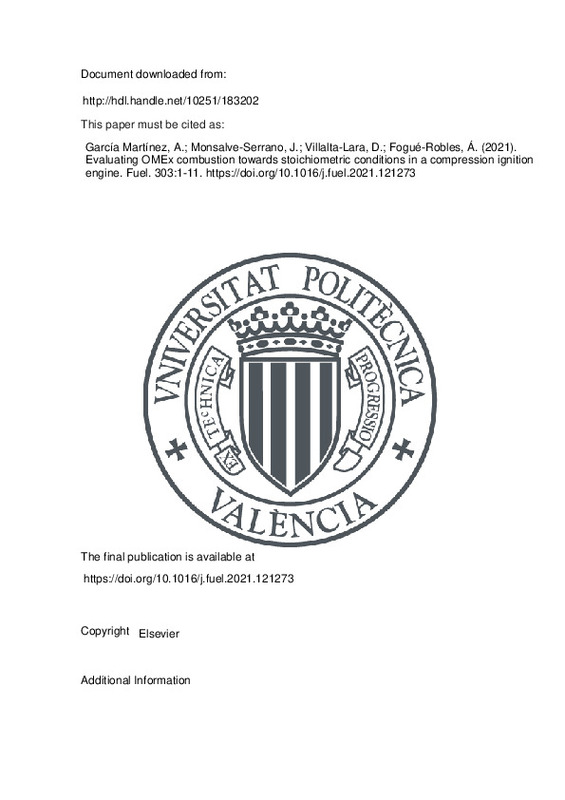JavaScript is disabled for your browser. Some features of this site may not work without it.
Buscar en RiuNet
Listar
Mi cuenta
Estadísticas
Ayuda RiuNet
Admin. UPV
Evaluating OMEx combustion towards stoichiometric conditions in a compression ignition engine
Mostrar el registro completo del ítem
García Martínez, A.; Monsalve-Serrano, J.; Villalta-Lara, D.; Fogué-Robles, Á. (2021). Evaluating OMEx combustion towards stoichiometric conditions in a compression ignition engine. Fuel. 303:1-11. https://doi.org/10.1016/j.fuel.2021.121273
Por favor, use este identificador para citar o enlazar este ítem: http://hdl.handle.net/10251/183202
Ficheros en el ítem
Metadatos del ítem
| Título: | Evaluating OMEx combustion towards stoichiometric conditions in a compression ignition engine | |
| Autor: | ||
| Entidad UPV: |
|
|
| Fecha difusión: |
|
|
| Resumen: |
[EN] Low energy density fuels combined with low temperature combustion modes have demonstrated a great contribution to engine-out NOx and soot reduction. Additionally, synthetic fuels have become an important way of reaching ...[+]
|
|
| Palabras clave: |
|
|
| Derechos de uso: | Reconocimiento - No comercial - Sin obra derivada (by-nc-nd) | |
| Fuente: |
|
|
| DOI: |
|
|
| Editorial: |
|
|
| Versión del editor: | https://doi.org/10.1016/j.fuel.2021.121273 | |
| Código del Proyecto: |
|
|
| Agradecimientos: |
The authors thanks ARAMCO Overseas Company for supporting this research. The authors also acknowledge the Conselleria de Innovacion, Universidades, Ciencia y Sociedad Digital de la Generalitat Valenciana
for partially ...[+]
|
|
| Tipo: |
|







![[Cerrado]](/themes/UPV/images/candado.png)


